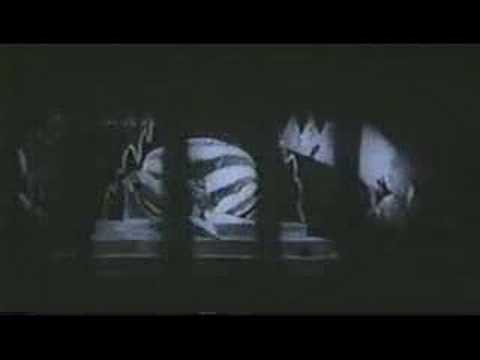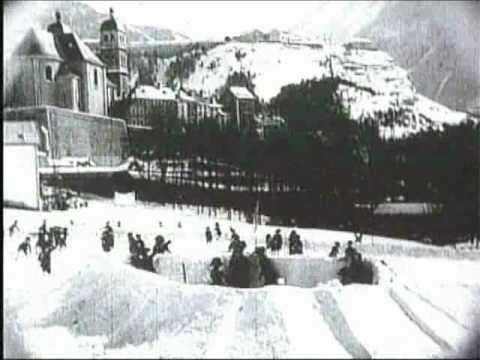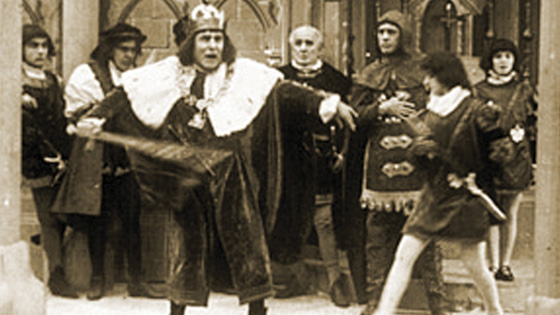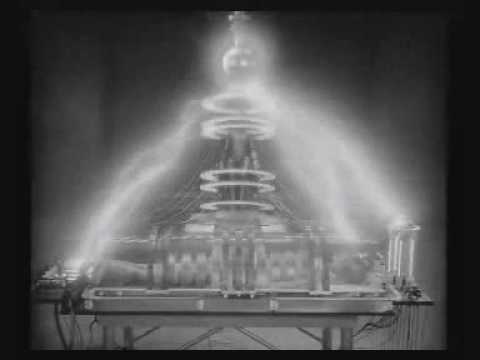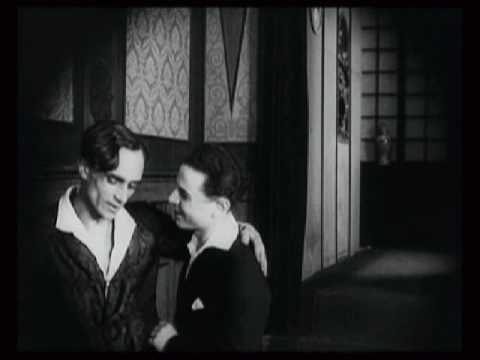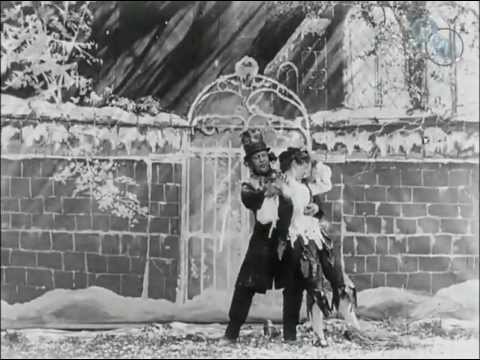10The Passion Of Joan Of Arc Was Found In A Norwegian Mental Hospital
Containing what is widely considered to be one of the greatest performances of all time, The Passion Of Joan Of Arc was a 1928 French movie about the titular heroine’s imprisonment, torture, and execution. Joan was played by stage actress Renee Jeanne Falconetti, who never performed in a movie again, returning to the stage before escaping to South America during WWII and eventually committing suicide there in 1946. Tragically, the movie was butchered by government censors and Catholic interest groups, who succeeded in having several scenes cut. After the master prints were destroyed in two separate fires, the full version of the movie came to be considered lost. Then, in a bizarre turn of events, a Danish print of the movie was unearthed, hidden away in the janitor’s closet of a Norwegian insane asylum. There are no known records of how the print ended up there before its discovery in 1981, but thanks to the (slightly creepy) twist of fate, the movie has since been restored to its full glory.
9A Page Of Madness Was In The Director’s Shed All Along
A lost classic of early Japanese cinema, Teinosuke Kinusaga’s A Page Of Madness was released in 1926 to overwhelmingly positive critical reception. Set in a Japanese asylum, the film follows the story of the institution’s janitor, whose wife is a patient at the same hospital. The story was written by Yasunari Kawabata, the 1968 winner of the Nobel Price for Literature, and was supposedly based on the Emperor Yoshihito, who is said to have been mentally ill. Despite being one of the first Japanese films to be widely critically praised in the West, it wasn’t financially successful—shockingly, a creepy, surreal movie about Japanese lunatics wasn’t a huge hit with old-timey American audiences. The film was presumed destroyed after a fire and was written off as a lost treasure of cinema. But remember that old saying about things always being in the last place you look? In 1971, Kinusaga was rummaging around his old potting shed when he came across a print of the film, which he had stored inside a rice barrel and then simply forgotten about. Unfortunately, about a quarter of the footage was missing from the reel, but what remains has been restored to full viewing quality—allowing A Page Of Madness to become a firm favorite of a whole new generation of avant-garde cinema-goers.
8Wings Was Concealed In Paris
The 1929 film Wings was the first winner of the Academy Award for Best Picture, then called the Outstanding Picture Award. A pioneering work in cinematography, Wings detailed the story of two rival pilots during the First World War (essentially Top Gun with more racism and biplanes). It became a huge hit on release, thanks to some daring stuntwork and the widespread interest in aviation caused by Charles Lindbergh’s successful transatlantic flight. The movie starred Paramount’s top box office draw, Clara Bow, as well as unknowns Charles Rogers and Richard Arlens as the two ace pilots. Unfortunately, the movie’s Oscar-winning acclaim wasn’t enough to prevent it becoming lost for decades. Thankfully, a nitrate print surfaced in the Cinémathèque Française, a Paris film museum known for protecting a large collection of movie prints during the German occupation—though the circumstances of it finding its way to France are still unknown. A spare negative was eventually discovered in the Paramount vaults, and was used for a fully remastered Blu-ray edition.
7Napoleon Was Pieced Together From Around The World
In 1927, the director Abel Gance released an epic labor of love to an incredibly disinterested audience. Gance’s historical epic, Napoleon, was an extremely ambitious undertaking that would revolutionize the technical aspects of cinema—among other things, it developed the concept of widescreen a good 26 years before the technique took off with the introduction of CinemaScope. The film centered around Napoleon Bonaparte’s early life, starting from his childhood at military school in France, through his activities during the French Revolution, all the way up to his invasion of Italy in 1796. Clocking in at seven hours, the film is one of the longest ever made and by far the longest movie made at the time. Insanely, Gance initially planned for the film to be the first in a series of six, chronicling Bonaparte’s entire career. Unfortunately, the film’s greatness couldn’t save it from getting hacked to pieces by overzealous editors, who didn’t quite see the appeal of the ambitious project. The edited version remained in circulation, but the cut scenes were lost after Gance destroyed the negatives in a fit of despair in the ’50s. Thanks to film historian Kevin Brownlow, the full movie has now been pieced back together. Brownlow painstakingly tracked down remaining screening prints from around the world, using a copy of the film’s original script as a guide to patch them together. Thanks to his work, Napoleon has been restored as close to Gance’s original vision as it will probably ever get.
6Richard III Was Found In A Retiree’s Basement
In 1912, a collaboration between French and American directors produced the first feature-length adaption of Shakespeare, Richard III—which also happens to be the oldest completely surviving American feature film. The title character was played by Frederick Warde, a classically trained British actor, in a 55-minute epic, which by 1912 standards was like sitting through the entire Lord Of The Rings trilogy. Instead of using speech cards, the actors conveyed Shakespeare’s dialog via pantomime and body language, resulting in a very different—but no less brilliant—adaption of the play. Prior to US showings of the movie, Fredericke Warde himself would appear to give a brief introduction. He would also read excerpts from the play while they changed the reels. With no home video market, films of the day had little market value after their initial run and all prints of Richard III were believed to have been lost to history. That all changed in 1996, when the American Film Institute received a copy of the original print from a retired Portland factory manager named William Buffum. A lifelong movie fan and part-time projectionist, Buffum had acquired the print in the ’60s, as part of a trade with a fellow enthusiast. Though he didn’t realize exactly what he had, he carefully preserved the film for over 30 years, saving a piece of movie history for future generations.
5Metropolis Turned Up In Argentina
Metropolis is considered the masterpiece of legendary German expressionist director Fritz Lang. The movie centers around the divide between the workers and the wealthy upper class in the futuristic city of Metropolis, as well as the dehumanizing effects of the automation of industry. Unfortunately, the movie ended up being butchered by outside editors, first to make it more appealing to viewers and later due to “communist imagery,” which in the early 20th century could have meant anything from genuine socialist subtext to mentioning the color red. The original print was eventually lost, with only the massacred edit left as a reminder of what once was. Thankfully, hoarding old stuff out of sentimentality came to the rescue once again. In 2008, a complete copy of the original print turned up in Buenos Aires’ Museum Del Cine. Having been passed between various theaters and screenings since 1928, the print was understandably somewhat the worse for wear. However, it was in a good enough state that only two scenes were completely unrecoverable, leaving Metropolis as close as possible to Lang’s original vision.
4Wake In Fright Was Marked For Destruction
Wake In Fright, or as it was known in some markets, Outback, is considered a piece of Australian cinema history, despite being relatively recent, having been released in 1971. The movie, starring the legendary actor Donald Pleasance, revolves around a schoolteacher’s experiences in a mining town in the Australian outback. Despite receiving some pretty positive responses worldwide, the movie soon disappeared into obscurity, with nearly all film reels decayed beyond use and only poor quality VHS releases from the 1980s remaining. This was until the film’s original editor, Anthony Buckley, set out to rediscover the original prints. In 1998, he came tantalizingly close, arriving at the British Film Institute only to find that the reels had been shipped out to the US the week before. He wasn’t able to pick up the trail until 2002, when he finally located the prints in a CBS Pittsburgh shipping container—and just in time too, as the crate had been been marked for destruction. Unfortunately, the story still didn’t end there, as it turned out that those prints weren’t the original negatives, but cut-up TV versions. It wasn’t until 2004 that a complete set of the original prints were discovered in the “dump bins” of the shipping company. These were the basis of a digitally restored version of the film, released in 2009 to universal acclaim.
3A Fatty Arbuckle/Buster Keaton Movie Was Found In Norway
Two of the silent era’s greatest comedians, Buster Keaton, and Fatty Arbuckle joined forces for several projects in the early Hollywood era. One of those projects, the 1918 short The Cook, had long since been thought lost—and due to the false accusations of rape and murder that cruelly ended up ruining Arbuckle’s career, nobody had bothered to look very hard for his stuff. However, as history cleared his name and reintroduced a generation of comedy fans to his work, the fact that a lot of it was missing became a problem. A handful of his movies have since been rediscovered, but this short in particular reappeared in an unexpected place. In 1999, a newly discovered print of the The Cook was screened at UCLA, having been unearthed by Professor Jan Olsson, hidden among some nitrate film stock belonging to the Norwegian Film Institute. Like The Passion Of Joan Of Arc, there is no indication of just how the film made its way to Scandinavia. The movie itself, which is still sadly missing its opening and closing scenes, is a classic silent comedy premise revolving around Arbuckle and Keaton working together in a kitchen, with the appropriate ensuing hijinx.
2The Pro-Gay Movie Hidden In Another Movie
In 1919, Conrad Veidt, famous for his roles in The Man Who Laughs and The Cabinet Of Dr Caligari, starred in Different From the Others, a German film that had the audacity to show homosexuality as an okay thing, with the two male leads in a romantic relationship. As you can probably guess, early 20th century morality wasn’t exactly thrilled with the concept. Despite both critical and commercial success, the German government despised the movie for its offensive content (i.e. showing gay men as human beings), and it was banned a year later. When the Nazis came to power they made a point of destroying every print of the movie they could get their hands on. The story might have ended there if not for man by the name of Dr. Magnus Hirschfeld, who had both starred in the movie, and co-written it. Somehow, Hirschfeld managed to get hold of 40 minutes of material from Different From the Others, which he then hid by cutting it up and dispersing it throughout his other work, Laws Of Love. The movie then made its way to Russia, where it was simply left in the Russian Film Archives, forgotten for the remainder of the 20th century. In 2011, UCLA managed to purchase a copy of the footage, with the intention of restoring the film by combining it with other fragments of footage that survived the Nazi regime
1The Earliest Charles Dickens Adaption Was Just Forgotten About
Charles Dickens’ works have been adapted to film many times—“A Christmas Carol” has been co-opted by every cartoon and sitcom known to man—but the earliest adaption was actually thought lost up until a few years ago. And it is old with a capital O, dating all the way back to 1901. Lasting just over a minute, The Death Of Poor Joe is a filmed version of the death of Joe from Dickens’ classic book “Bleak House.” The short had been given to the British Film Institute in 1954 by an acquaintance of the director, cinema pioneer George Albert Smith, and them promptly forgotten about until 2012, when it was found in the archives by curator Bryony Dixon. The film had been misfiled as being made in 1902, putting it behind another early adaption of Dickens, a movie version of Marley’s ghost from “A Christmas Carol.” I’m a semi-professional cartoonist from Sweden who likes to dabble in writing about pop culture on the side. My works can be found here, here, and here, as well as on the Webcomic Factory.

